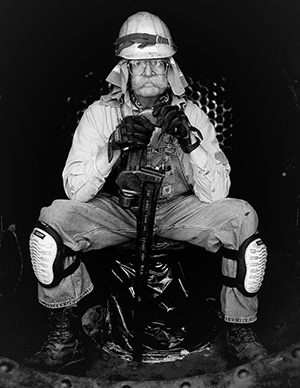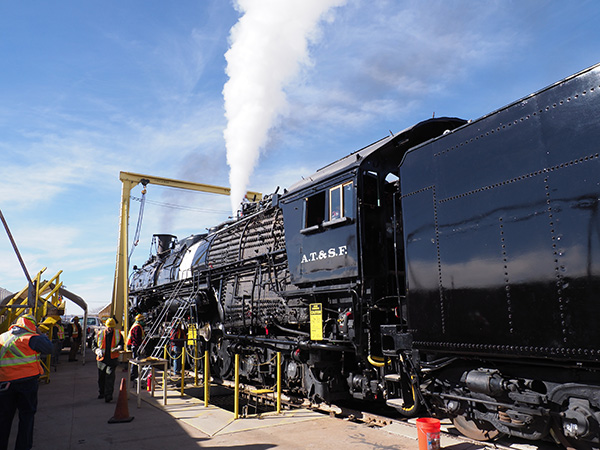By Michael F. Hartshorne, MD
From Radiologist to Railroader

“Both hands and wrists for Rheumatoid Arthritis. Normal.” I finally read those last films a few months ago. Retired now, I spend time working on the complete restoration of the giant, 1944-built Atchison, Topeka and Santa Fe Railway Company’s Steam Locomotive #2926.
As I worked through an eight-year professional slow down, teaching and practicing radiology and nuclear medicine, I learned more and more of the mechanical arts involved in a high-pressure boiler — the bearings, brakes and running gear, air and water appliances, and all the parts and pieces of a high-tech steam locomotive.
But the best part of it is that I work with volunteers who are NOT SICK — most of the time.
I am now well acquainted with scientists, engineers, educators, medical professionals, business folks, plumbers, pipefitters, welders, carpenters, electricians and students, most of whom I would never have met at my hospital. What our volunteers have most in common is the desire to see a wonderful icon of New Mexico’s railroad history run again, pulling passenger excursion trains full of smiling extended families.
The group dynamics of the New Mexico Steam Locomotive and Railroad Historical Society (NMSL&RHS) keep bringing me back to my pre-medical school days as a social worker and my decades as a department chief. The gang whose efforts I help manage still calls me Dr. Mike — oh well, you can’t pick your nickname!

Restoration railroading hasn’t been easy, from raising funds in a poor state to grant writing and remembering not to get upset when you are told ‘no’. Building track, a 20-foot gantry crane over the track, a work pit under the track, and setting up machine shops, tool shops, storage space, office space, and an engine house have been tough jobs.
Work on the 2926 itself has been heavy, hot, cold, dirty, greasy and interesting. New challenges include dealing with derailments, mechanical repairs and documentation as well as learning the lingo and rules to work with the Federal Railroad Administration, New Mexico Department of Transportation, state and local governments, tradesmen, suppliers and real railroaders.
I learn something every day I work on the 2926 — it’s like going to grad school in overalls. I’ve also learned that railroading is a family affair. Granddad went off to war in a troop train behind this locomotive. Grandma dispatched for the Santa Fe. An uncle is an engineer. Shake a family tree in New Mexico very hard and a railroad story falls out. When the COVID-19 crazy times are over, the 2926 will run again to the delight of hundreds of families.